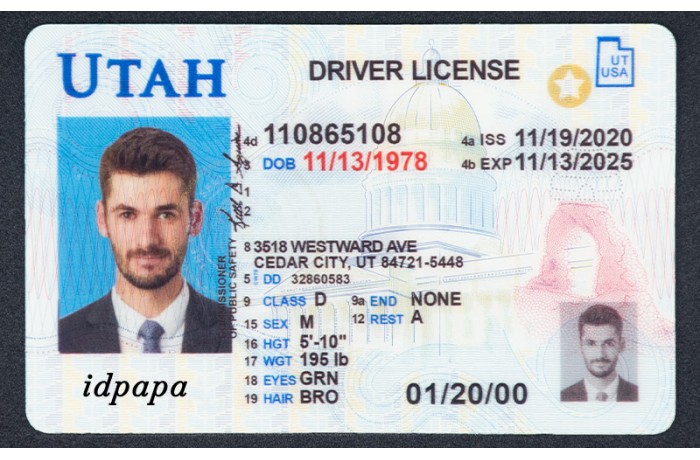Top Guide to Scannable copyright
Top Guide to Scannable copyright
Blog Article

Yo, wanna score yourself a copyright that's gonna breeze right past those machines? You've come to the correct place, my friend. This is your crash course to everything you need to know about snagging a scannable copyright that's practically undetectable. We're talkin' the ins and outs of materials, construction, and escaping those laser pointers. Get ready to take it to the next level with this in-depth guide.
Take note closely, because this info is gold.
Unveiling the Secrets of Scannable copyright
The ever-evolving landscape of counterfeiting/falsification/imitation presents a continuous/persistent/ongoing challenge to security measures worldwide. Advanced/Sophisticated/Cutting-edge technologies are now employed in the creation of fraudulent/phony/bogus identification documents, capable/designed/equipped of withstanding/evade/bypassing even the most rigorous/stringent/strict scanning systems. These scannable/readable/interpretable IDs often utilize/employ/harness specialized/unique/proprietary materials and sophisticated/complex/intricate printing techniques to replicate/mimic/forge the look and feel of genuine/legitimate/authorized documents. To effectively/successfully/adequately combat this persistent/increasing/rampant threat, it's crucial/essential/vital to understand/analyze/decipher the inner workings/mechanisms/functions behind these copyright/fake/fraudulent IDs.
- Examining/Analyzing/Decoding the materials/substrates/components used in the construction of scannable/readable/interpretable IDs can provide/yield/offer valuable insights/clues/information into their authenticity/legitimacy/genuineness.
- High-resolution/Detailed/Precise imaging techniques can reveal/expose/uncover the subtle/minute/delicate variations/differences/discrepancies between genuine/real/authorized and copyright/fake/fraudulent IDs.
- Forensic/Scientific/Technical analysis of inks, pigments/dyes/colors, and security features/elements/markers can assist/aid/support in authentication/verification/identification of genuine/legitimate/authorized documents.
Staying/Remaining/Continuing one step ahead of fraudsters/impostors/forgers requires a proactive/dynamic/adaptive approach that involves continuous/ongoing/regular research/investigation/development into new technologies and countermeasures/strategies/tactics. By collaborating/working together/pooling resources, authorities/institutions/agencies can strengthen/enhance/bolster security measures and mitigate/reduce/minimize the threat posed by scannable/readable/interpretable copyright.
Crafting the Perfect copyright That Works
Yo dudes! Want to evade those pesky age checks and get into the hottest clubs? Well, listen up because I'm gonna spill the beans on how to construct a scannable copyright that's so good, it'll fool even the most astute bouncers.
- You need to know
- you'll need
- {like a printer, laser engraver, inkjet printer|that includes|such as a
{and some seriously If you can handle a few tools and have a knack for detail, you're already halfway there. We're talking about mastering the craft of imitation.
What Are copyright Made Scan-Proof?
Crafting a fraudulent ID that can evade electronic detectors is a intricate endeavor. Fabricators utilize advanced techniques to mimic the protection features of genuine IDs. This often involves engraving microchips and unique paints that are practically indistinguishable from the true article. The goal is to create a document that deceives scanners, resulting in an ID that appears legitimate.
Decoding the Technology of Fake Identification
copyright identification documents are becoming increasingly sophisticated, incorporating technologies designed to evade detection. These fake IDs often utilize specialized inks, holograms, and even microprinting techniques that mimic the security features of genuine IDs. The science behind scannable copyright IDs involves understanding how these characteristics are processed by scanners and authentication systems.
One common method is to embed unauthorized information into the ID document itself. This covert information can be interpreted by scanners, potentially manipulating authentication systems into accepting the copyright ID as legitimate.
Furthermore, counterfeiters may exploit vulnerabilities in scanner technology. For example, some scanners are prone to being exploited by specific signals emitted by the copyright ID. This allows for the injection of false data that bypasses standard security protocols.
- Fraudsters are constantly evolving their techniques to stay ahead of authentication advancements.
To combat this growing threat, it's crucial to invest in sophisticated scanning technologies and develop robust security measures that can effectively detect and prevent the circulation of scannable copyright IDs.
Want to Make a copyright That Can Defeat the Scanner?
Alright, so you're thinking about building yourself a copyright that can trick those scanners at the club. Listen up, because this is serious stuff. You gotta be smart if you want to create something that'll actually pass. First off, forget about low-quality materials. We're talking top-notch cardstock. And don't even think about using more info your scanner at home. You need to obtain some professional technology.
Next, you gotta study the features of real IDs. Examine the design elements and try to duplicate them as accurately as possible. Note that even the smallest discrepancy can get you caught.
Investigate different techniques and discover what works best. Maybe explore forums dedicated to copyright creation. But be careful, because some of that info could be inaccurate.
And finally, keep in mind that making a copyright is a grave offense. It's against the law. Don't dismiss the ramifications. If you get caught, you could face some serious repercussions.
Report this page